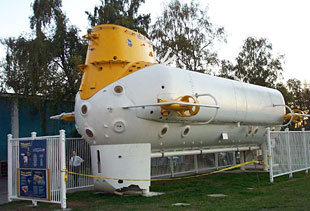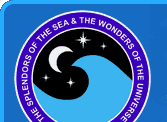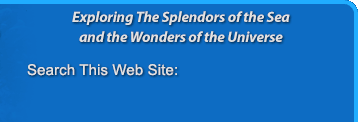
CC BY-SA 3.0
Jacques Piccard
1922 - 2008
Swiss oceanographer and engineer.
Invented and developed underwater vehicles for studying ocean currents.
One of the first persons to explore the deepest part of the ocean, the Challenger Deep in the Pacific Ocean.
Jacques Piccard was a Swiss oceanographer and engineer. He was born on July 28, 1922 in Brussels, Belgium. His father, Auguste Piccard, was an adventurer who had set two records for reaching the highest altitude in a balloon in 1931 and 1932. Jacques attended school at a private school called École Nouvelle de Suisse Romande in Lausanne, Switzerland. He graduated in 1943 and went to college at the University of Geneva, where he studied physics and economics. He took a year off in 1944 to serve with the French First Army. In 1946 he received his licentiate degree and in 1946 and began teaching. His father was using the buoyancy technique from balloons to develop a deep-sea submersible vehicle known as a bathyscaphe. Jacques worked with his father to improve the bathyscaphe design and prove its potential for deep water dives. They built three bathyscaphes between 1948 and 1955. In 1953 they tested a new vehicle called the Trieste and reached a depth 10,168 feet (3,099 meters) in the Mediterranean near Capri off the coast of Italy. With the successes of the bathyscaphe, Jacques gave up teaching to continue working with his father on improving the vehicle and demonstrating its uses for exploration and research.

hoisted into the ocean
In 1956 Jacques Piccard went to the United States to seek funding for further research. At the time, the U.S. Navy was working on submarine designs for underwater research. Piccard demonstrated the capabilities of the bathyscaphe to the Navy. They were impressed with the design and saw its potential for underwater salvage and rescue missions. They purchased the Trieste and hired Piccard as a consultant. At this time the Trieste was capable of reaching depths of up to 24,000 feet (7,315 meters). But Piccard was planning a much more daring dive which would be a literal voyage to the bottom of the sea. On January 23, 1960 Jacques Piccard and Lt. Don Walsh took the Trieste to the Mariana Trench in the Pacific Ocean. Their goal was the Challenger Deep, the deepest known place in the world. They descended for nearly five hours and reached a depth of 35,797 feet (10,911 meters). At this incredible depth, they observed fish and shrimp. This discovery shocked the scientific community because scientists were convinced that no life could survive the intense pressure this deep in the ocean. After a 20-minute stay, the Trieste dumped its ballast. The journey back to the surface took a little over three hours. The historic dive captured the imagination of the world. Piccard wrote about the adventure in Seven Miles Down with the help of Robert Dietz, a geologist who had helped to plan the mission. The dive was a success for bragging rights, but had little scientific impact since it was incapable of taking samples or taking photographs. The Trieste was retired in 1961.

at the Vancouver Maritime Museum
After the success of the Challenger Deep mission, Piccard and his father designed a new submersible called a mesoscaphe. The first vehicle to be built was called the Auguste Piccard and was the world's first passenger submarine. It transported more than 33,000 tourists beneath Lake Geneva during the Swiss Exhibition of 1964. A later model called the Ben Franklin was used for scientific research. On July 14, 1969 the Ben Franklin was towed to the center of the Gulf Stream off the coast of Palm Beach Florida. A six-member crew led by Jacques Piccard spent more than four weeks in the vessel studying the currents for the U.S. Navy. They also provided valuable data about long duration travel in confined spaces for the U.S. space program. This data would be useful for the upcoming Apollo and Skylab projects. The crew of the Ben Franklin drifted northeast for 1,444 miles (2,324 km) and surfaced near Nova Scotia. In 1971 Piccard documented the voyage in his book The Sun Beneath the Sea. He spent the next few years as a science consultant for American deep-sea research organizations including Grumman Aircraft. His work with the oceans showed him the dangers posed by human activity. In the 1970s he founded the Foundation for the Study and Protection of Seas and Lakes. In an interview, he stated that the sea can only be saved by dramatic changes in relation to fishing and pollution. He died on November 1, 2008 in La Tour-de-Peilz, Switzerland. His research and inventions contributed to our understanding of the world's oceans. He loved the sea and believed that "The more people discover the sea, the greater the chance of bringing marine issues into public view and the better off we will all be."




